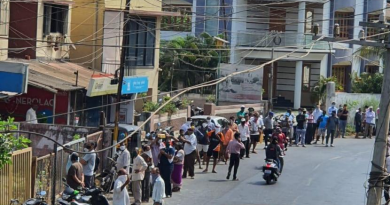Government Tweaks Rules For Testing As …
Government Tweaks Rules For Testing As COVID-19 Cases Rise.
Corona virus Pandemic, India: A vast number of patients in India, however, have been asymptomatic, which means they show no symptoms of the illness, according to experts and data received from states.

New Delhi: No Reverse transcription PCR or RT-PCR tests – conducted to detect the presence of pathogens in the body – will be done for corona virus patients showing mild symptoms before they are discharged, the Union Health Ministry said today as it revised its guidelines for the discharge of COVID-19 patients. The new guidelines come as corona virus cases in India inch towards the 60,000-mark.
“As we learn more about the illness, our guidelines will also evolve based on the learning from our experience, studies conducted by other countries and guidelines set by the Centers for Disease Control and Prevention, the top health body in US,” a senior official said, adding that the new guidelines will help reduce the burden on the country’s hospitals if the number of severe corona virus cases surge in coming days.
“Very mild, mild and pre-symptomatic cases can be discharged after 10 days of symptom onset and no fever for three days,” read the new guidelines, adding that “no test is required before discharge from COVID-19 care centres”.
For moderate cases, if fever resolves within three days and no oxygen support is needed, the patients can be discharged after 10 days of onset of symptoms, according to the Health Ministry. If symptoms are not resolved in three days and the patients require oxygen support, they can be “discharged only after resolution of clinical symptoms and ability to maintain oxygen saturation for three consecutive days,” according to the fresh guidelines.
In all these cases, the patients can be discharged as their symptoms are relieved without an RT-PCR test; they have be to isolated at home for seven days.
Those with severe symptoms will be “discharged only after clinical recovery” and “after testing negative once by RT-PCR (after resolution of symptoms)”.
Earlier, the patient had to test negative twice for COVID-19 before being discharged.
At any point of time during his recovery at the health facility, if the oxygen saturation levels dip below 95 per cent, patient will be moved to “a dedicated COVID-19 health centre”.
After discharge, if the patient again develops symptoms of fever, cough or breathing difficulty he will contact the COVID care centre or state helpline or 1075. A follow-up will be done on day-14 through teleconference.
A vast number of patients in India so far have been asymptomatic, which means they show no symptoms of the illness, according to experts and data received from states.
“80 per cent of the cases are asymptomatic. Our biggest worry is on their detection. There is no other way than contact-tracing,” Dr Raman R Gangakhedkar, a senior scientist at the Indian Council of Medical Research (ICMR), told NDTV last month.
The governments in Delhi and Maharashtra- the worst-hit in the country due to the pandemic – also shared data last month to show that many of patients did not know that they were carrying the virus before they were tested.




